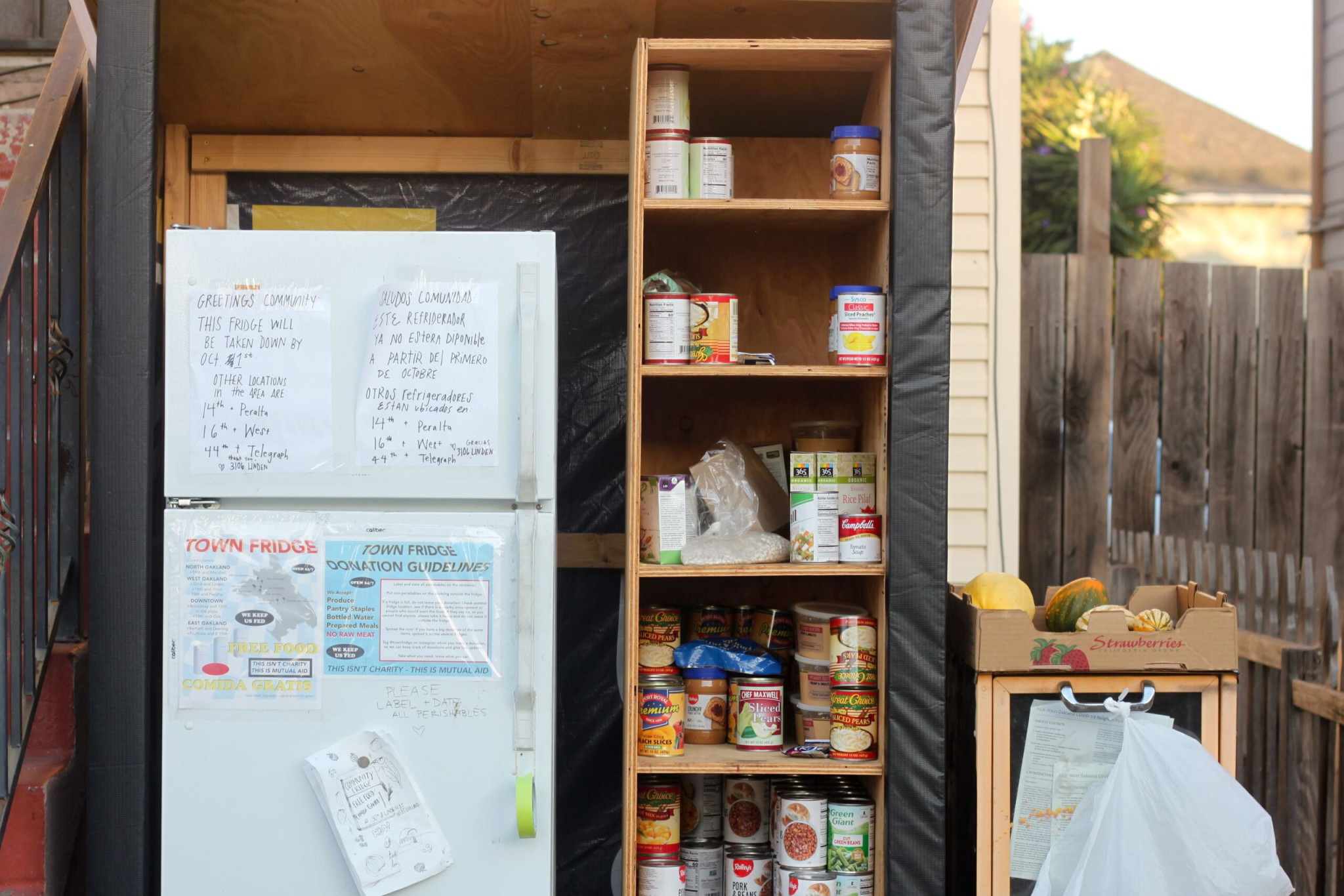Refrigerators on sidewalks and street corners labeled with handwritten signs reading, “Free Food, Comida Gratis,” and hosting cornucopias of various food items have been popping up around the Bay Area. There are currently 10 such community fridges in Oakland — all placed by the organization Town Fridge and continuously filled by donations from locals. Since an Instagram post announcing their first fridge unexpectedly blew up in late June of 2020, Town Fridge has expanded quickly. The organization prioritizes BIPOC and unsheltered people, but aims to address food injustice and local food deserts on the whole.
Town Fridge is a recent addition to a large slew of nonprofits all working on the ever-present and now rapidly growing issue of food insecurity. Food insecurity is disruption in an individual’s access to the amount of food required for active and healthy living due to a lack of money and resources.
Before the COVID-19 pandemic, over 35 million people in the United States experienced food insecurity. This year, food justice organization Feeding America predicts that over 54 million people across the country may struggle with it. The Bay Area is no exception to this problem.
As of 2018, 11.5 percent of Bay Area residents faced food insecurity. Recent increases in that number are very apparent to local organizations such as the Berkeley Food Network (BFN). BFN is a nonprofit that hosts a food pantry stocked with free goods, delivers meal packages to community centers and schools, and distributes food — much of which would have otherwise been wasted — to unsheltered people in Berkeley and Albany.
Since the beginning of the pandemic, there has been a 400 percent increase in people seeking the services provided by BFN. However, this alarming change has passed under the radar for most Bay Area residents. “Food insecurity is somewhat invisible [here],” said Holden Bussey, director of Berkeley Food Network Operations. “The Bay Area has a pretty thriving economy. With that being said, there [are] extreme wealth and access disparities,” he explained.
Bussey added, “The Bay Area is really agriculturally rich. So it is certainly not an issue of production — it is an issue of distribution.” While some neighborhoods are littered with high-quality grocery stores, others are food deserts where people lack access to food suppliers that can support a balanced diet. Neighborhoods without adequate food access often overlap with areas of low income and high unemployment rates, creating pockets in cities that are rife with food insecurity.
Even though some parts of the Bay Area lack food, restaurants forced to close due to COVID-19 have found themselves with an excess of food and no system through which they can distribute it to people in need. At the beginning of the shutdown, businesses reached out to Bonnie Christensen, director of BUSD Nutrition Services, in the hopes that she could use their food for the school lunch program. Unable to accept the pre-prepared meals, Christensen found herself in the role of a traffic director, attempting to point restaurants to organizations that could take and distribute the food.
Christensen has encountered both sides of the food distribution issue throughout her career — from her beginnings in New York City working in fine dining to now providing free lunches to students in need. A visit to a friend’s work at Twitter, where food for employees is abundant, illuminated the stark contrast between the two food realities for her. “At first, I was blown away and said, ‘Oh my God, this is the greatest thing.’ By the time I left, I [thought], ‘I can’t take it. We have hungry kids.’ And food is overflowing at Twitter — in excess to a degree that is just unnecessary and this is not okay,” she remembers.
As the pandemic progressed, Christensen headed the adaptation of the BUSD lunch program so that it could continue to reach students and families in need. Policies from the United States Department of Agriculture have allotted funding for schools across the country to provide free food to all students — regardless of income — through the end of 2020, so BUSD is currently offering free breakfast and lunch.
The school program and multitudes of independent organizations create a hodge-podge of food services that are not always cohesive. Bussey observed this and said, “There [are] a lot of people who give incredible amounts of energy, time, and effort toward their work. But that could be used in a more efficient way if it was coordinated through a centralized body.” He believes that government involvement — with its expansive access to data, the ability to oversee many organizations, and other resources — could be beneficial. “I actually don't really feel that nonprofits should exist. I think that we are filling a void of a lack of government services,” expressed Bussey.
Christensen agreed that government involvement could aid food distribution. “It does seem to me that there should be an infrastructure for excess food to be channeled into pantries [and] food banks, so that [it] is not wasted — which is a huge sustainability issue — and so that it gets distributed to people who are hungry,” she explained.
Food insecurity extends past food itself. For those without shelter, there are complicated logistics involving food storage. For students, hunger may affect mood and lead them into trouble at school. Receiving free food is often accompanied by shame due to societal stigma. However, for those with resources, there are ways to help. Volunteering or donating to local organizations like BFN are two immediate actions. Voting also makes a major difference, as housing policies and agricultural subsidies impact food insecurity.
For Bussey, the bottom line is clear. “Access to food is a basic human right that everyone deserves — even if they are not in a financial position to afford it.”





